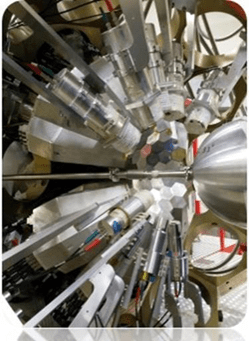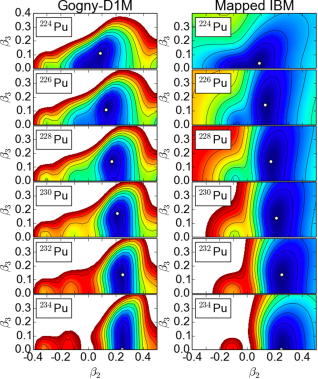Pear-shaped plutonium studied with AGATA

Members of the Nuclear Physics cluster have been involved in an experiment using the new AGATA gamma-ray tracking array (see figure below) at Legnaro National Laboratory, Italy. The experiment aimed to search for octupole collectivity in neutron-deficient plutonium isotopes (Z = 94).

The AGATA gamma-ray tracking spectrometer at Legnaro.
The experiment was proposed to study the onset of octupole correlations in the hitherto unstudied neutron-deficient plutonium isotopes 232Pu and 234Pu by locating excited states up to around 12ħ, with the help of multi-nucleon transfer reactions between a 112Sn beam and 238U target. The AGATA gamma-ray spectrometer was used in conjunction with the DANTE charged-particle detector array and the PRISMA mass spectrometer.
Octupole deformation in nuclei has been a subject of considerable interest for several decades. An octupole shape – pear shape – breaks parity (mirror) symmetry since the shape has a “big” end and a “small” end. Symmetry is only restored with a combination of the parity operator (space inversion) and rotation operator (rotation by 180⁰). This situation leads to degenerate positive- and negative-parity states in the nucleus. Octupole correlations occur in localised regions of the nuclear chart and are most prevalent in the light-actinide region of the nuclear chart due to the close proximity of the octupole-driving Δj = Δℓ = 3 i13/2 and f7/2 subshells for protons and j15/2 and g9/2 for neutrons. Experimetally, the observation of low-lying negative-parity states (interleaving with the yrast positive-parity states) and enhanced electric-dipole (E1) transitions has become synonymous with enhanced octupole correlations and a pear-shaped nucleus. In the even-even nuclei of the light-actinide region, there are examples of interleaving-opposite parity states (octupole bands) in over 20 of the 86Rn, 88Ra, 90Th, and 92U nuclei. The neutron-deficient 94Pu nuclei lie on the high-Z side of the light-actinide octupole region.

Predicted ground-state deformations for neutron-deficient Pu isotopes. The Y axis shows the octupole deformation parameter β3 and the X axis the quadrupole deformation parameter β2.
To date, the plutonium nuclei have largely been ignored in terms of studies of octupole cor-
Relations because they are difficult to access experimentally. However, the close proximity of the neutron-deficient plutonium isotopes to the octupole-driving orbitals in the light-actinide region leads to the assumption that they should be susceptible to strong octupole correlations. Recent theoretical calculations of octupole correlations, which include the plutonium (and higher Z) isotopes, support this assumption, see plot above.